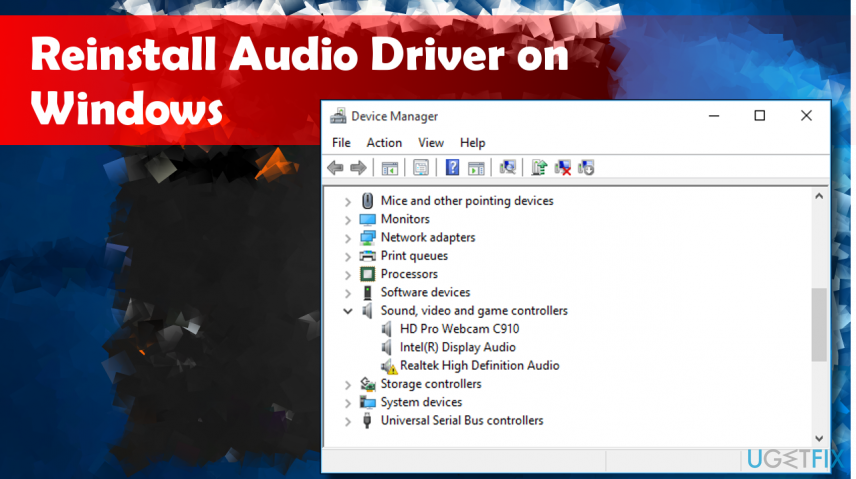
- #No audio output device installed cant get speaker to work drivers#
- #No audio output device installed cant get speaker to work manual#
- #No audio output device installed cant get speaker to work Pc#
The upper row has one additional pin, the fifth one, that is not used. On each row, from left to right, pins are: PIN1 = VCC or +5V, PIN2 = Data – or D-, PIN3 = Data + or D+, PIN4 = Ground or GND. One USB header can be used to connect two different USB devices since it has two rows of identical pins. Use the picture below as a guide to visually locate it.
#No audio output device installed cant get speaker to work manual#
Motherboard’s instruction manual can be of great help in this step. The first order of business is to locate an unused USB header connector on the motherboard, it usually has 9 pins sticking out of it, and in the near vicinity the text “USB” is written. The front panel audio jacks on the computer chassis are then connected to the USB sound card’s output audio jacks, to retain their intended purpose. This way you don’t loose any of the free USB ports on your computer and the card is safely hidden inside of the computer case.

The idea is to take apart the mentioned external USB sound card and connect it directly to an unused USB header on the motherboard. If you don’t have the above two connectors on hand, you can use a few pieces of thin wire instead, and solder them directly to motherboard’s USB Header and Front Panel Audio Header on the computer chassis.9 pin female Front Panel Audio header connector with cable (Not essential).9 pin female USB header connector with cable (Not essential).Soldering iron with conical and chisel tips.External USB Sound Card (can be obtained from eBay or local computer parts store).
#No audio output device installed cant get speaker to work Pc#
Since an external USB sound card sticking out of the USB port would impact the portability of this mini PC to some extent, I decided to tear it apart and connect it directly to the unused USB header on the motherboard.īelow is a picture of the finished product – an external USB sound card or DAC, modified to fit inside of the computer case and connect directly to spare USB header on the motherboard. I could try replacing the ALC662 IC, but since I don’t have one in stock, I opted for a second best option – replacing or bypassing the on board audio chip with an external USB sound card or DAC. The fault lies in an on-board Realtek ALC662 IC chip or its circuit.

I tried measuring audio jacks with a multimeter no short circuits and no open connections relative to the motherboard.
#No audio output device installed cant get speaker to work drivers#
I tried disabling front panel jack detection in HD Audio Manager and thus force the sound output from front panel jacks, even when device is not detected, no dice.Īfter trying a few more drivers the latest driver directly from Realtek and a native Microsoft High Definition Audio Device driver, I concluded this is a hardware problem. After opening the Realtek HD Audio Manager, I noticed that analog jacks are all grayed out, which means the Realtek doesn’t detect when a device (speaker or headphone) is plugged in. This PC features three jacks on the back and two on the front panel. After freshly installing Windows 7 and all the required drivers from the motherboard manufacturer’s website, I connected speakers and noticed there is no sound output from any of the analog audio jacks. A friend of mine brought me this mini PC, based on a ZOTAC GeForce 9300-ITX WiFi motherboard.


 0 kommentar(er)
0 kommentar(er)
